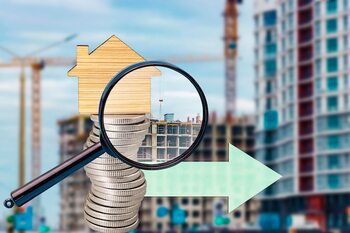The influence of the natural environment on the value of your home

The location of your home is more than just a point on the map; it is a determining factor in its value. The influence of the natural environment, from proximity to parks to panoramic views, can significantly increase the appreciation of your property. In Costa Rica, where nature is lush and diverse, understanding how these elements impact your real estate investment is essential to maximize its potential. Discover how the natural environment not only beautifies your home but also translates into economic benefits that you won't want to miss.
The relationship between nature and well-being: Why does it matter?
The connection between nature and well-being is undeniable. Numerous studies have shown that living near natural spaces, such as forests, rivers, or mountains, contributes to better mental and physical health. The presence of green areas not only improves air quality but also provides a space for recreation and rest, resulting in reduced stress and an overall increase in quality of life. In this sense, homeowners who value their personal well-being will be attracted to homes located in suitable natural environments, which automatically increases the demand and value of such properties.
Additionally, the relationship between nature and well-being has direct implications in the real estate market. Homes surrounded by nature tend to appreciate more over time due to their unique appeal. Today's buyers are looking for not just a place to live, but also a healthy and balanced lifestyle; this makes properties near parks or with panoramic views particularly sought after. Therefore, investing in a home in a natural setting is not only beneficial for your emotional and physical health, but it can also prove to be a very savvy financial decision in the long run.
2. Green spaces: A magnet for potential buyers.
Green spaces, such as parks, community gardens, and natural areas, are a key attraction for homebuyers. These environments not only offer a place for leisure and recreation but also provide psychological and physical benefits, such as stress reduction and the promotion of an active lifestyle. Proximity to green areas can be a decisive factor when choosing a property, as many families seek healthy environments where their children can play freely and adults can enjoy outdoor activities. Thus, having nearby green spaces can increase the appeal of a home in the real estate market.
Studies have shown that properties located near green areas tend to maintain their value better than those situated in densely populated urban environments without access to nature. This is because the demand for housing in quiet areas with good environmental quality continues to grow. When including green spaces in their analysis when valuing a property, buyers not only consider the initial cost but also the long-term potential of their investment. Therefore, if you are thinking of selling your home or simply want to maximize its current value, it is crucial to highlight any nearby green space as an integral part of the overall appeal of the property.
3. Impact of panoramic views on property value.
Panoramic views are one of the most sought-after aspects by buyers when considering a property. These views, which can range from majestic mountains to coastal landscapes, not only provide daily visual delight but also become a determining factor in the property's valuation. A house with exceptional views can attract greater demand in the market, allowing owners to set higher prices. In regions like Costa Rica, where natural beauty is an integral part of the lifestyle, having a property that offers these views can translate into a significantly higher return on investment. Additionally, panoramic views contribute to creating an environment of well-being and tranquility, elements highly valued by those seeking a home. The connection with the natural surroundings fosters a healthier and more relaxed lifestyle, further enhancing the appreciation for the property. Buyers tend to pay more for those unique experiences that can only be found when living surrounded by stunning nature. Therefore, investing in a home with impressive views is not only appealing from an aesthetic standpoint; it also represents a smart strategy to maximize the value of your real estate investment in the long term.
4. Proximity to protected areas: A competitive advantage.
Proximity to protected areas has become one of the most attractive features for home buyers. These spaces, which can include national parks, biological reserves, or conservation zones, not only provide a refuge for native wildlife and flora but also offer residents direct access to outdoor recreational activities. Living near these areas allows homeowners to enjoy hiking, cycling, and other activities in a privileged natural setting. This connection to nature not only enhances quality of life but also makes properties near these zones highly valued in the market.
In addition to the aesthetic and recreational appeal that protected areas provide, their presence can significantly influence the appreciation of a property's value. Properties located near these spaces tend to maintain their value and even increase over time, as they are associated with a healthy and sustainable lifestyle. Buyers are increasingly aware of environmental impact and seek homes that allow them to enjoy the natural surroundings while contributing to their conservation. Therefore, investing in a property close to a protected area not only represents a conscious ecological decision but also a smart strategy to ensure a favorable economic return in the future.
5. How the weather influences real estate demand.
The relationship between climate and real estate demand is a crucial aspect to consider when evaluating the value of a property. In regions with pleasant climates, such as temperate or tropical areas, demand tends to be higher, which can translate into higher housing prices. For example, in Costa Rica, where the warm climate attracts both local residents and expatriates seeking an outdoor lifestyle, the presence of a favorable natural environment becomes a decisive attraction. Properties located near beaches, mountains, or forests often appreciate more due to the quality of life that these elements offer.
On the other hand, extreme climate changes can negatively affect real estate demand. Areas prone to flooding, severe droughts, or hurricanes may see their values decrease drastically. The perception of risk associated with climate directly influences purchasing decisions; therefore, it is essential for buyers and investors to analyze not only the immediate environment but also future climate trends. Being aware of these variables allows for informed decisions that protect their investment and maximize long-term economic returns.
6. Case studies: Properties with high value due to their natural surroundings.
The natural environment can be a decisive factor in the valuation of a property. Recent studies have shown that homes located near green areas, such as parks or nature reserves, tend to have higher selling prices. For example, in some areas of Costa Rica, properties that offer views of the sea or mountains are not only valued for their scenic beauty but also attract buyers willing to invest more due to the quality of life they provide. This type of environment not only enhances the aesthetics of the home but also promotes a healthy and active lifestyle, thereby increasing its appeal in the market.
In addition to the immediate value associated with natural beauty, access to resources such as hiking trails or outdoor activities can be a major draw for families and young professionals. For example, in communities near national parks or pristine beaches, homeowners often notice a significant increase in demand for their properties. This translates not only into greater appreciation when selling but also into stability of real estate value over the long term. Properties that enjoy these characteristics can become ideal retreats for those looking to escape the urban hustle and live surrounded by nature without sacrificing access to essential services.
7. Strategies to enhance added value using the natural environment.
To enhance the value of your home through the natural environment, it is essential to consider the incorporation of elements that highlight the landscape characteristics of the area. For example, if your property is near a river or a mountain, you can design outdoor spaces that offer panoramic views and facilitate access to recreational activities such as hiking or cycling. The creation of native gardens that attract local wildlife and promote biodiversity not only beautifies the space but also generates a healthy and relaxing environment, which is highly valued by potential buyers.
Additionally, integrating sustainable practices into home maintenance can increase its appeal to a market that is becoming increasingly environmentally conscious. Installing rainwater harvesting systems, solar panels, or using eco-friendly materials for construction not only reduces long-term operating costs but also positions your property as a responsible option in the eyes of those seeking a home in harmony with nature. By promoting this synergy between your home and its natural surroundings, you are creating a unique proposition that can significantly enhance its value in the competitive real estate market.



